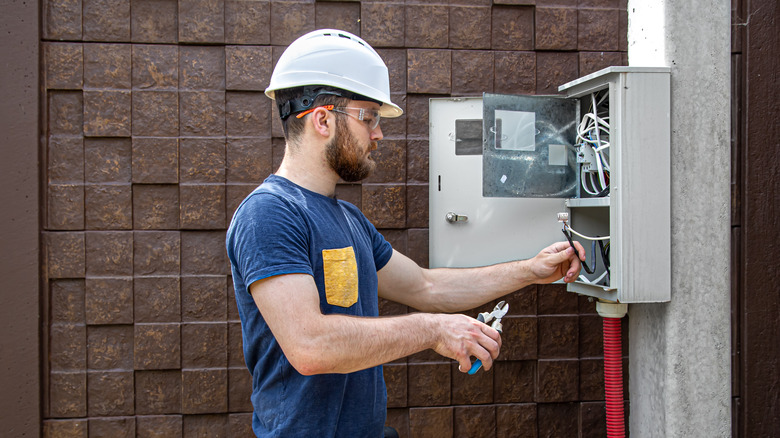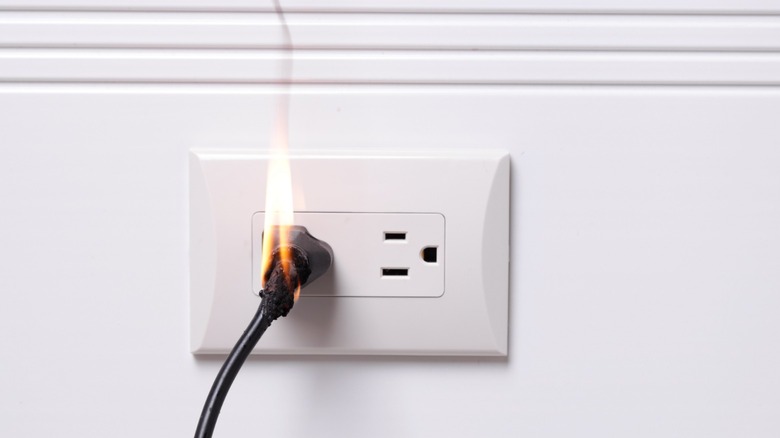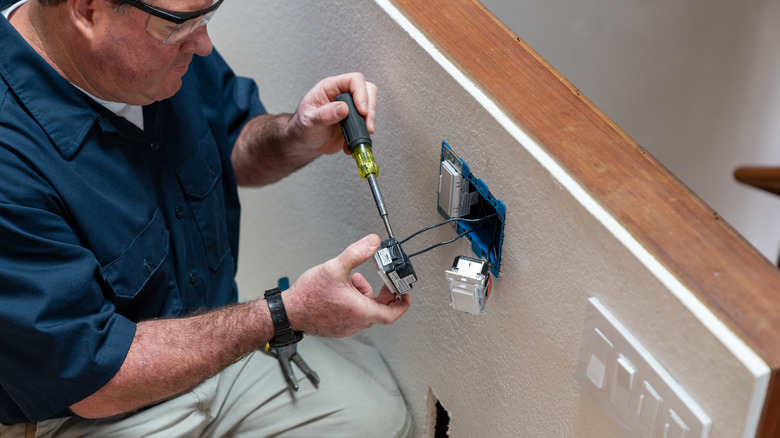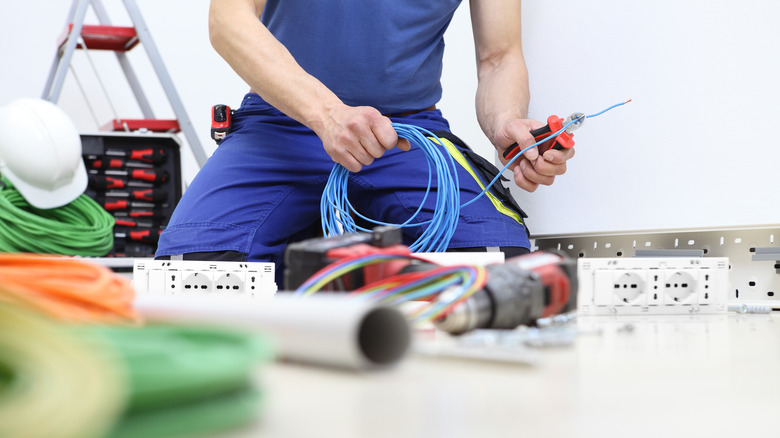The Hidden Dangers Of Aluminum Wiring (And How To Tell If It's In Your Home)
Aluminum wiring was put into American homes from about 1965 to 1972. It was used during the Vietnam War due to a shortage of copper and ignorance about how dangerous it would turn out to be. Unfortunately, it's now common knowledge that homes with aluminum wiring are 55 times more likely to have fire hazard conditions. We'll be talking about these dangers and the signs to look for if you're unsure whether your home has aluminum wiring or not.
If you bought a house that was built during those years, the chances are that it's got aluminum wiring. But these may not be the only homes in danger, as any electrical work that was done during those years is also suspect. Having said that, not all aluminum wiring is dangerous — it's used in many commercial settings, including power grids and utility companies! The danger mostly lies in the connection points, so let's dig in.
The dangers of aluminum wiring
The biggest problem is with the outlets. The main reason why aluminum is more dangerous than copper in residential houses is that it's less malleable than copper, and it expands and contracts more than copper does during load temperature changes. This makes connection points more susceptible to loosening, or wires becoming exposed. Once wires are exposed, they begin to corrode and oxidize, often causing overheating.
When the wires start to overheat, it's the connection points that are most vulnerable to damage. Outlets, fixtures, and anywhere the wires have been spliced are particularly at risk of breaking, fraying, or arcing. This presents the greatest fire risk to homeowners with aluminum wiring. To make matters worse, these potential risks intensify as time goes on, due to the vicious cycle of overheating and expansion that feeds on itself. Luckily, though, potentially dangerous risks are relatively easy to identify.
How to tell if you have aluminum wiring
There are definite signs to look for to spot potential issues and determine if you have aluminum wiring. For example, check your outlet covers to see if they're warm to the touch. While you're at it, check for any discoloration, as this could also be a sign that there's too much heat being generated. Next, you can remove the cover to inspect the wire itself, and you may be able to see the lettering on the plastic coating — look for the abbreviations AL or ALUM.
Other warning signs are arcing, sparks, or shocks when you plug anything into the outlet. Also, you might notice any smell of burnt plastic near the outlets or a fixture that burns out lightbulbs faster than normal. This could represent an irregular flow of electricity due to a poor connection from aluminum wiring. Flickering lights or buzzing noises near light switches or outlets in particular, can be signs of a poor connection and resulting fire hazard. These are the hidden dangers of aluminum wiring and how to tell if you have it — so, what should you do if you have it?
What to do if you have it
If you do discover that you have aluminum wiring, or you strongly suspect that you do, you should look for an electrician you can trust. If you don't have a relationship with one already, make sure you do your research, and always get more than one estimate. The cost to replace your home's electrical wiring can be very expensive — ranging from $1,500 up to $10,000 or more. It will be extensive construction work that will likely involve damaging walls or ceilings. Additionally, the cost of inspections and permits should be calculated and factored into the total cost.
But you also have another, more reasonable option for today's tough economy. If rewiring your entire home just isn't in the foreseeable future, you can simply replace the connection points with copper wire instead of aluminum. Switches and outlets will then have some added protection, where problems are more likely to occur. It doesn't completely solve the problem, but it's a compromise until you can afford a better one. Other than that, stay vigilant in watching for any of the warning signs we talked about.



